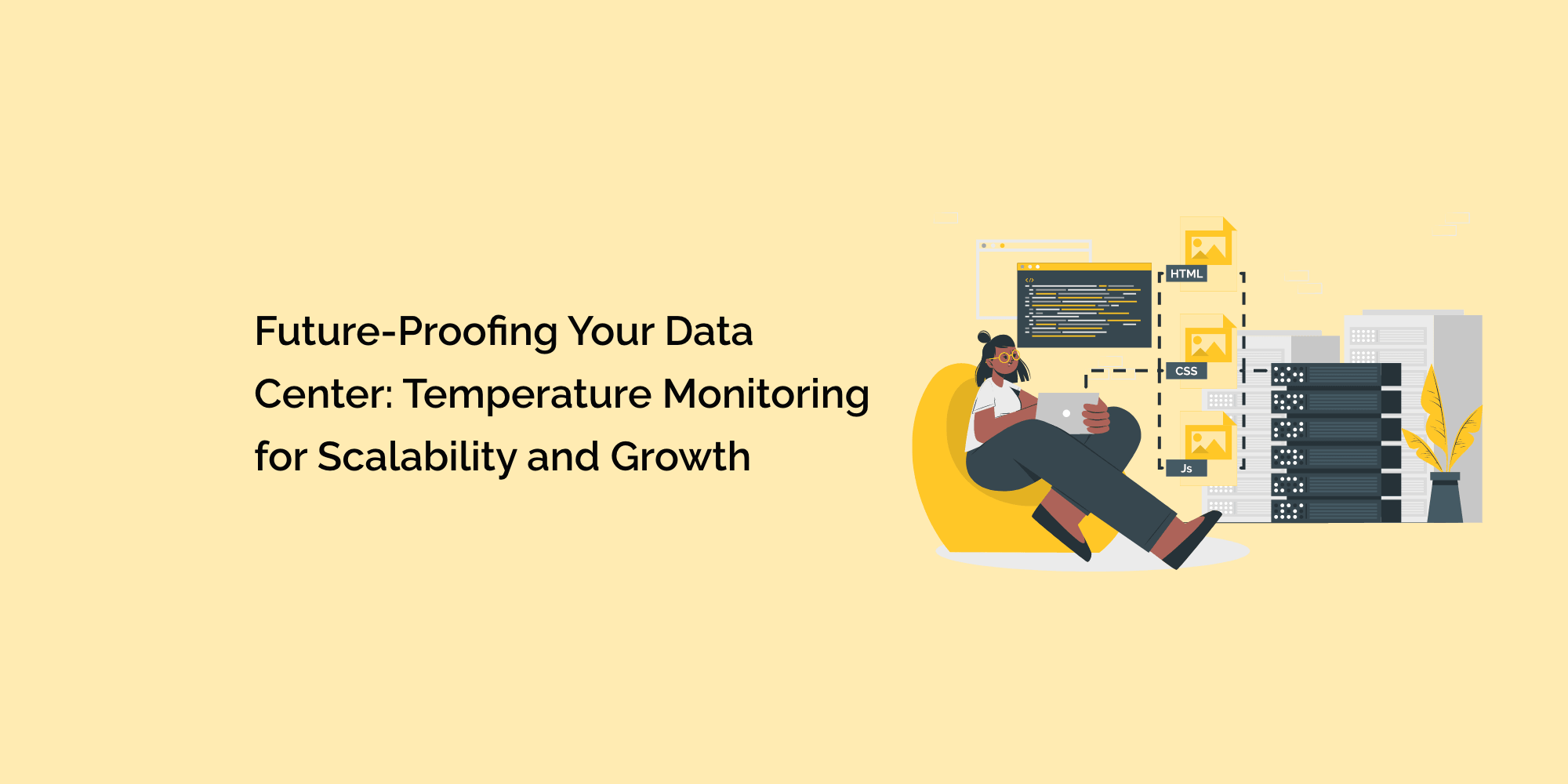Data centers are the lifeline of modern businesses, serving as the core infrastructure for storing, processing, and managing vast amounts of data. As the demand for data processing and storage continues to surge, data centers face unprecedented challenges to remain scalable, efficient, and reliable. One critical aspect of data center management that directly impacts scalability and growth is temperature monitoring. Maintaining optimal temperature conditions is vital for the reliable operation of hardware components and preventing potential downtime. In this comprehensive blog, we will explore the significance of temperature monitoring in future-proofing your data center, how it supports scalability and growth, and the best practices to ensure your data center remains at the cutting edge.
The Importance of Temperature Monitoring in Data Centers:
Temperature monitoring is essential in data centers for several reasons:
-
Hardware Performance: High-performance hardware components require stable temperatures to operate optimally. Temperature monitoring ensures that these components remain within the recommended temperature ranges, enhancing their reliability and extending their lifespan.
-
Preventing Downtime: Overheating can lead to hardware failures and unexpected downtime, causing significant disruptions to data center operations and services.
-
Energy Efficiency: Effective cooling management based on real-time temperature data allows data centers to optimize cooling systems for energy efficiency, reducing operational costs and environmental impact.
-
Proactive Issue Detection: Real-time temperature monitoring enables administrators to detect temperature fluctuations early and take immediate corrective action, preventing potential hardware failures.
- Data Protection: Temperature monitoring plays a crucial role in protecting valuable data by reducing the risk of temperature-related hardware failures and data corruption.
The Role of Temperature Monitoring in Scalability:
Temperature monitoring is instrumental in supporting data center scalability:
-
Hardware Provisioning: Monitoring temperature conditions in new server racks and cabinets during expansion ensures that hardware components are optimally placed to maintain uniform cooling.
-
Cooling Optimization: Temperature data helps optimize cooling systems during data center expansion to accommodate increased hardware density.
-
Heat Load Management: Temperature monitoring assists in managing the heat load generated by new equipment, ensuring it does not cause hotspots or disrupt existing infrastructure.
- Planning for Future Growth: Historical temperature data analysis aids in capacity planning and determining future cooling requirements based on predicted growth.
The Link between Temperature Monitoring and Data Center Growth:
Temperature monitoring plays a critical role in data center growth:
-
Infrastructure Planning: Real-time temperature data assists in planning the layout of data center infrastructure, including server racks, cooling units, and airflow management.
-
Resource Optimization: Monitoring temperature conditions enables administrators to allocate resources effectively, ensuring the data center operates efficiently even as it scales.
-
Energy Management: Temperature monitoring supports energy management strategies, such as dynamic cooling control, to optimize energy consumption during growth phases.
- Flexibility and Adaptability: With temperature data insights, data centers can remain agile and adapt to changing hardware requirements and cooling demands.
Future-Proofing Your Data Center:
To future-proof your data center with temperature monitoring, consider the following strategies:
-
Scalable Temperature Monitoring Solutions: Choose temperature monitoring solutions that can scale with your data center's growth, accommodating additional sensors and monitoring points as needed.
-
Advanced Analytics: Leverage historical temperature data and advanced analytics tools to gain valuable insights into cooling patterns and predict future cooling needs.
-
Integration with Data Center Management Platforms: Integrate temperature monitoring systems with existing data center management platforms for centralized monitoring and data-driven decision-making.
-
IoT and Automation: Embrace Internet of Things (IoT) and automation technologies to enhance temperature monitoring efficiency, enabling dynamic cooling adjustments based on real-time data.
- Regular Maintenance and Calibration: Ensure that temperature sensors and monitoring equipment undergo regular maintenance and calibration to maintain accurate and reliable data collection.
Best Practices for Temperature Monitoring in Scalable Data Centers:
To maximize the benefits of temperature monitoring in a scalable data center, follow these best practices:
-
Strategic Sensor Placement: Install temperature sensors strategically throughout the data center, focusing on areas susceptible to temperature fluctuations.
-
Real-Time Alerting: Implement real-time alerting mechanisms to receive immediate notifications when temperatures exceed predefined thresholds.
-
Continuous Monitoring: Maintain continuous temperature monitoring to detect sudden fluctuations and identify potential cooling issues early.
-
Historical Data Analysis: Analyze historical temperature data to identify patterns, trends, and opportunities for efficiency improvements.
- Collaboration between IT and Facilities Teams: Foster collaboration between IT and facilities teams to ensure comprehensive temperature monitoring and effective cooling management.
Innovations in Temperature Monitoring:
Advancements in temperature monitoring technologies are shaping the future of data center growth:
-
AI-Driven Analytics: Artificial intelligence-driven analytics tools can predict cooling requirements and optimize cooling systems for data center expansion.
-
Edge Computing Integration: Combining temperature monitoring with edge computing allows for real-time data processing and quicker response times.
-
Immersive Cooling Solutions: Immersive cooling technologies submerge hardware components in non-conductive fluids to optimize cooling efficiency and reduce data center footprint.
- Smart Cooling Control: Smart cooling control systems use real-time temperature data to dynamically adjust cooling infrastructure for energy-efficient cooling management.
Conclusion:
Temperature monitoring is the cornerstone of future-proofing data centers for scalability and growth. Maintaining optimal temperature conditions ensures hardware reliability, prevents downtime, and optimizes energy efficiency. By leveraging real-time insights from temperature monitoring solutions, data center administrators can make informed decisions, plan for expansion, and optimize cooling systems to accommodate growth.
Implementing best practices and embracing innovations in temperature monitoring technologies will help data centers stay at the cutting edge, providing a robust and scalable infrastructure for the ever-evolving digital landscape.








